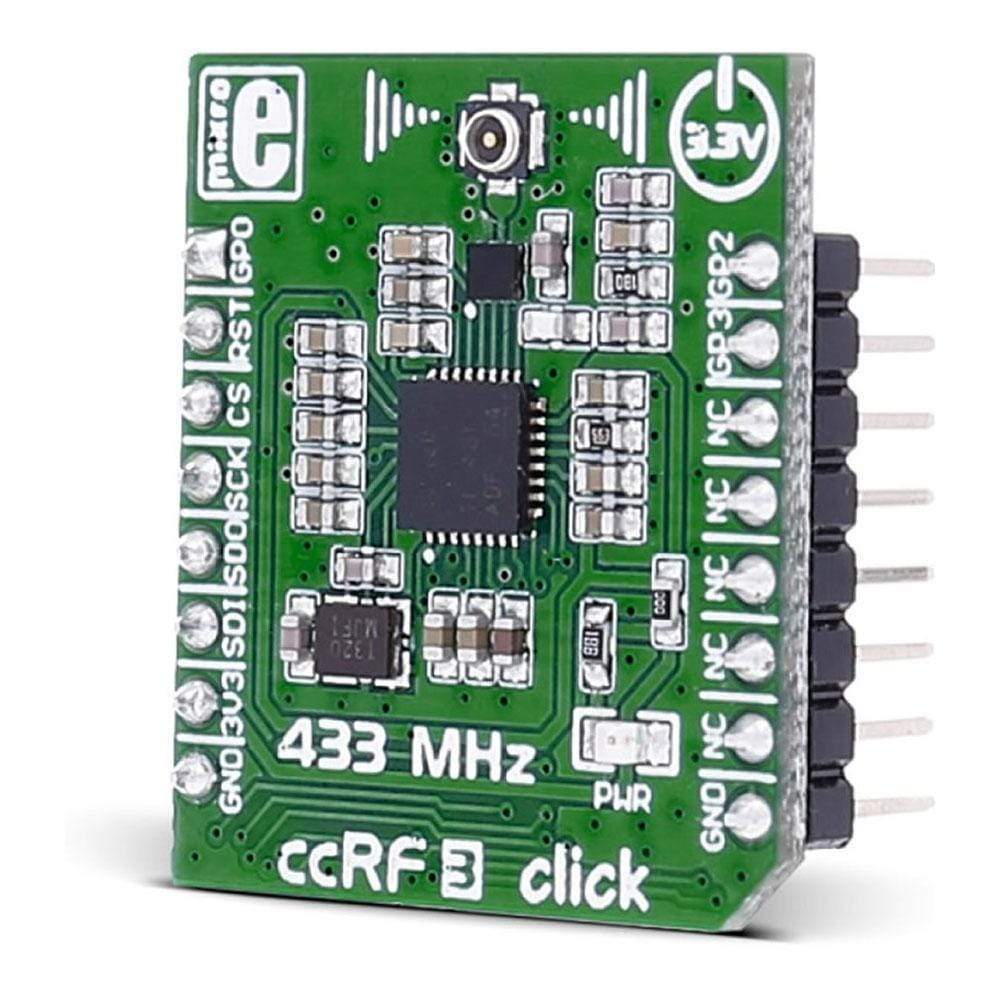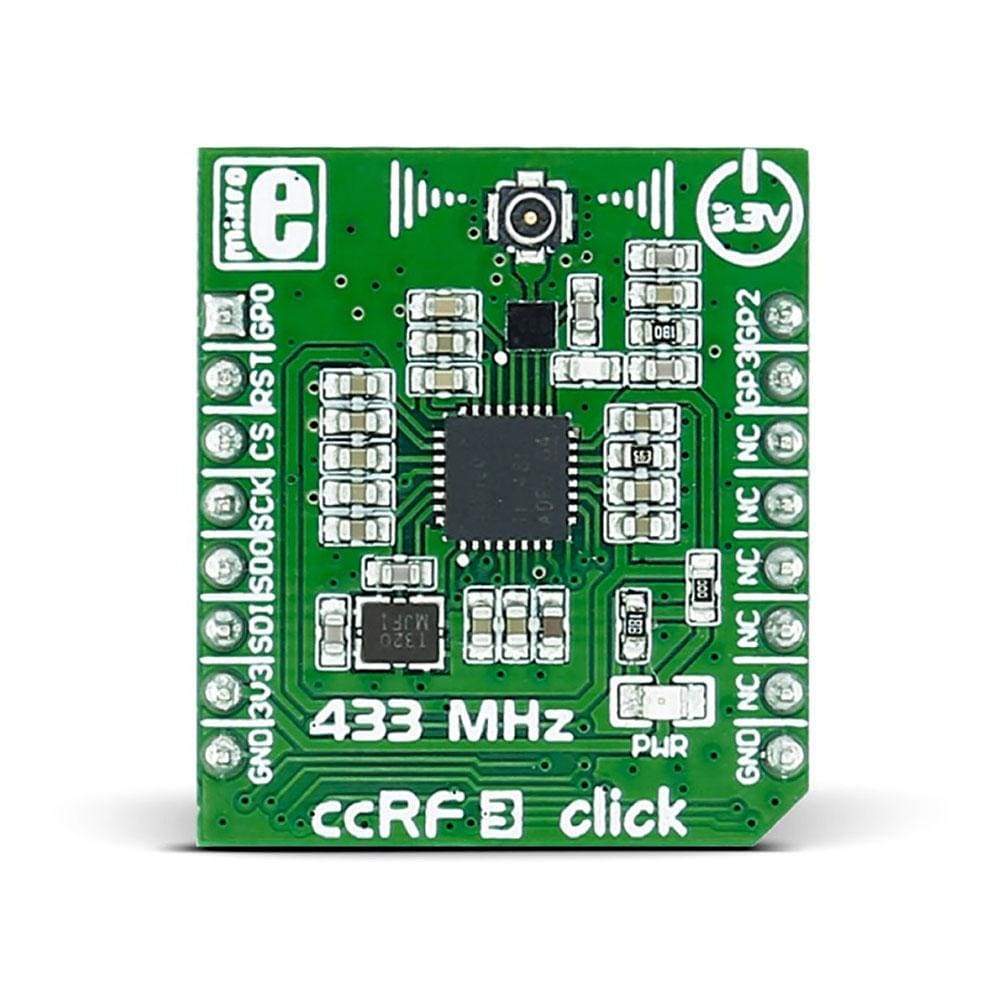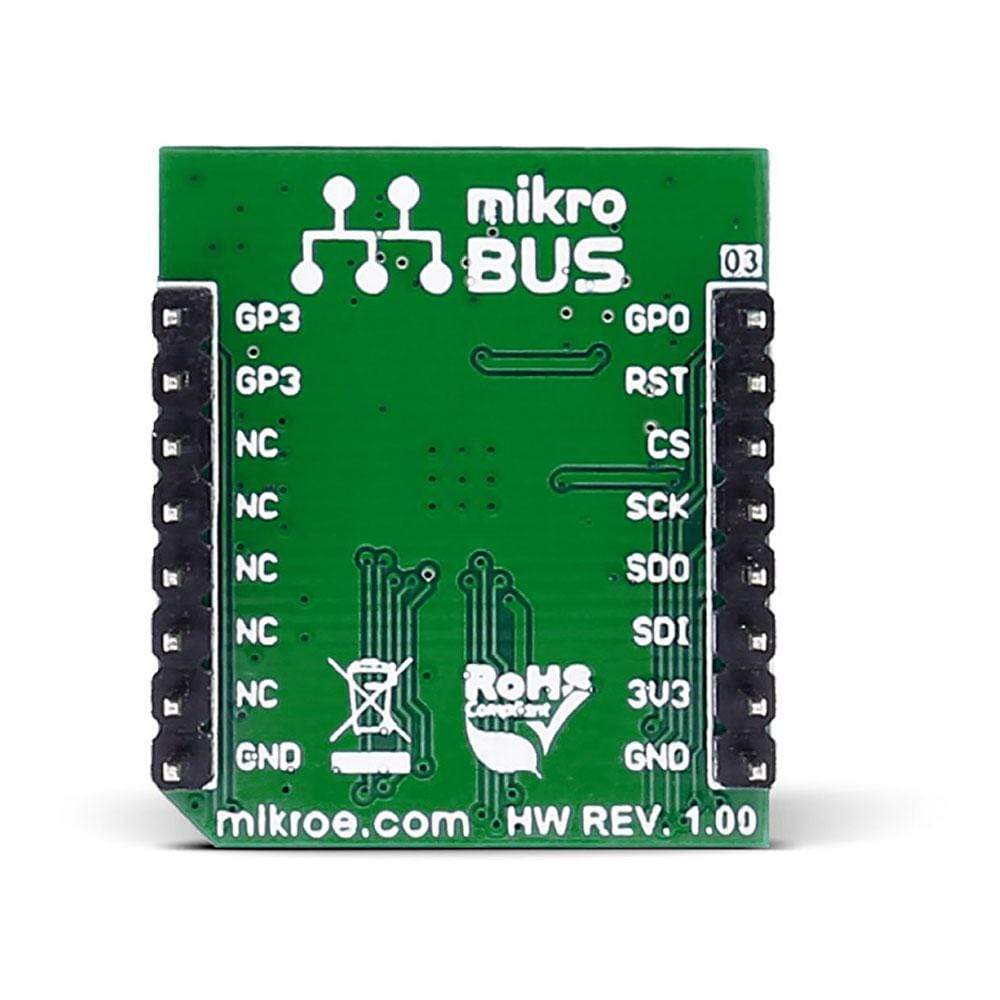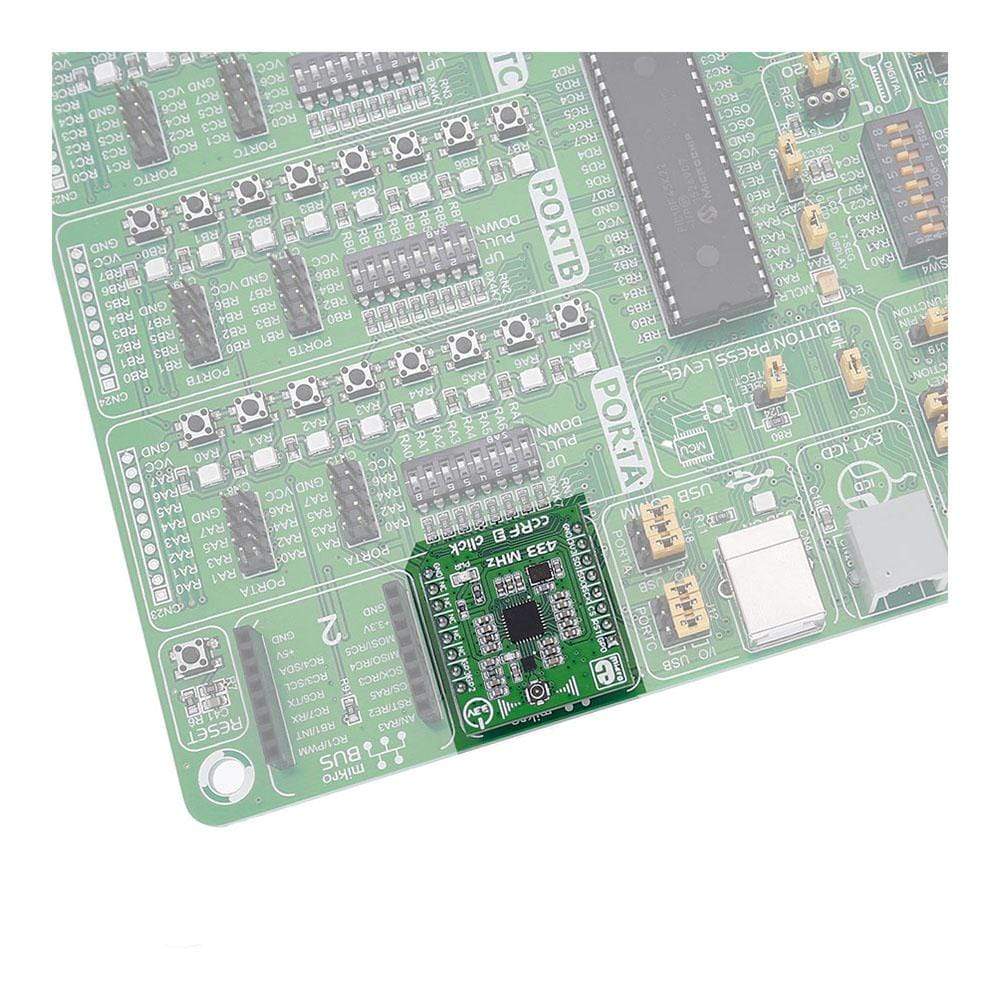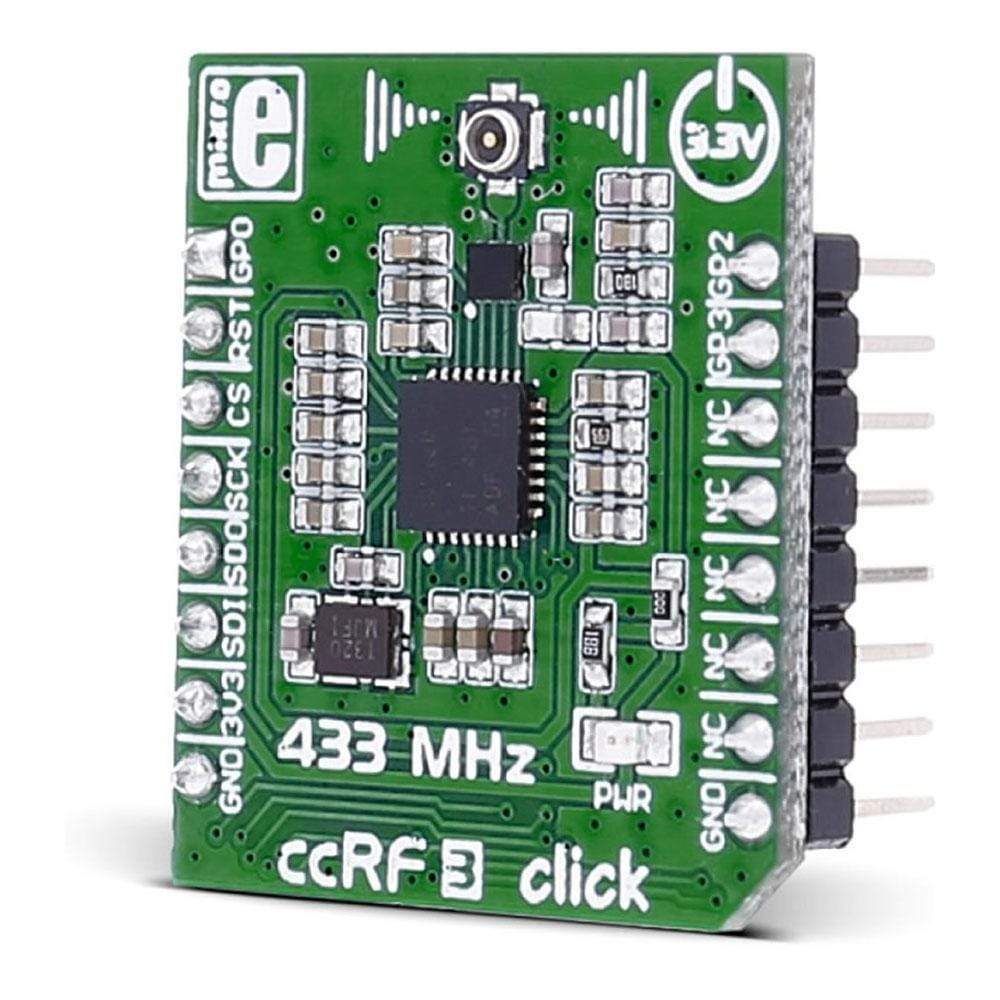
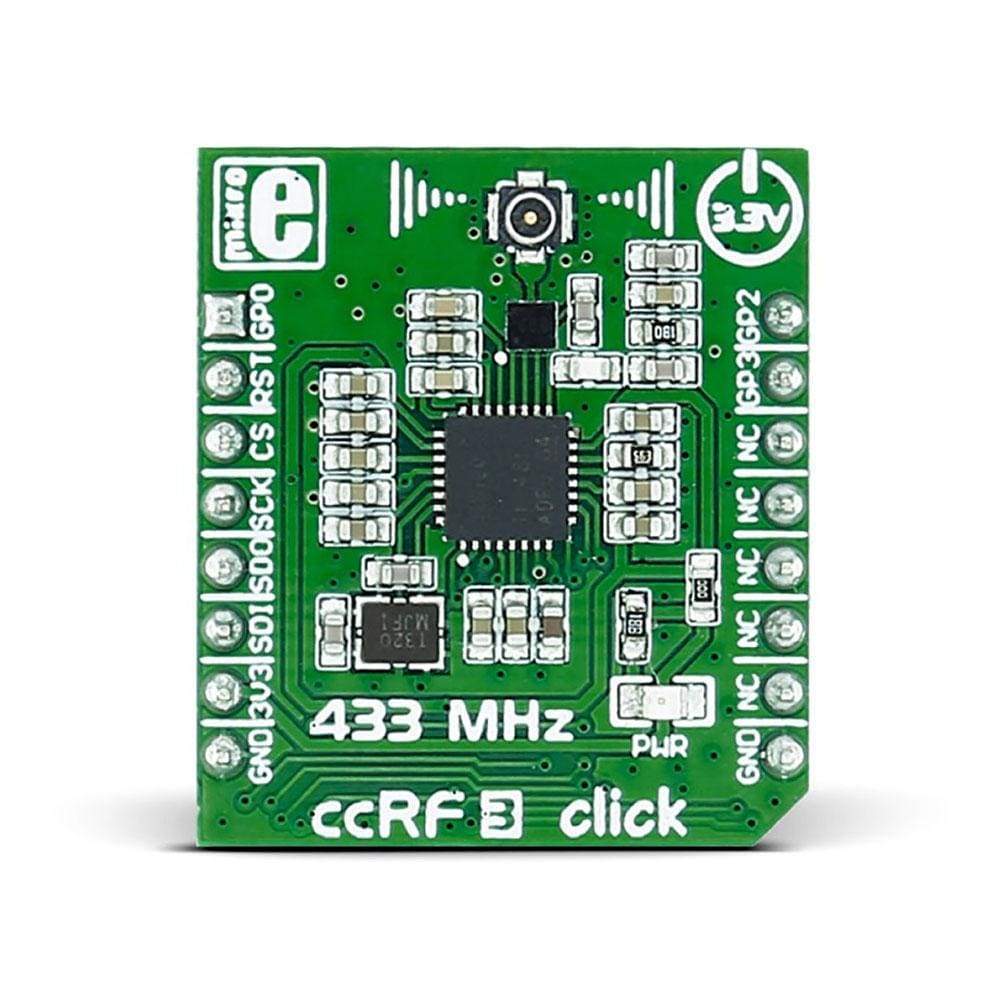
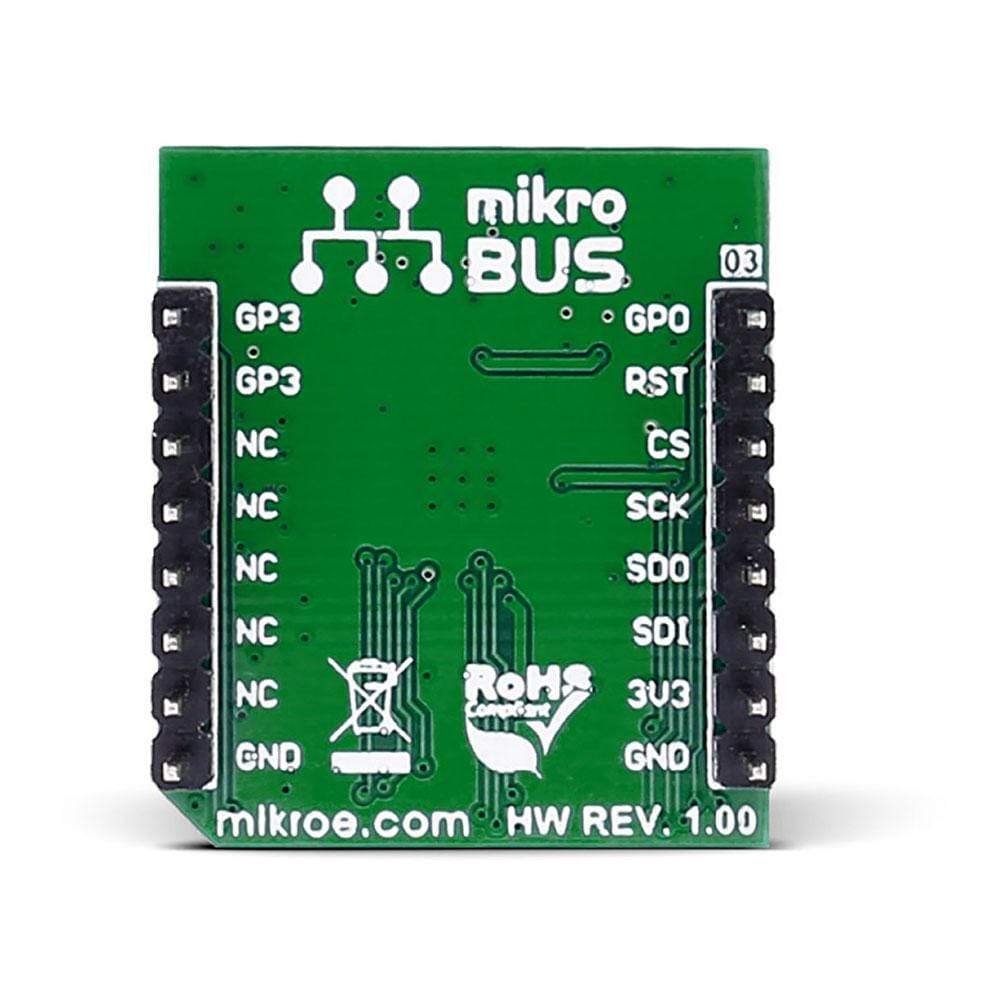
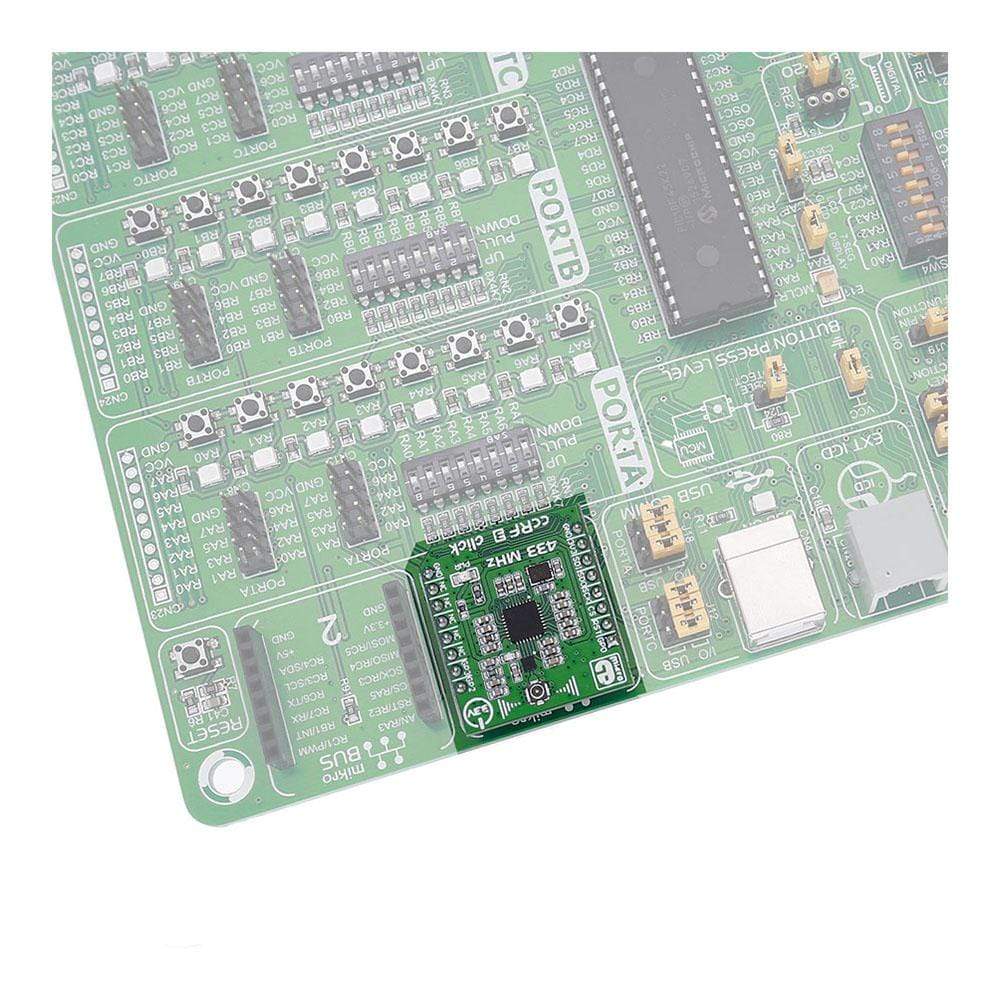
Overview
The ccRF 3 Click Board™ carries the CC1120 high-performance RF transceiver for narrowband systems from Texas Instruments.
The Click Board™ will enable you to add a low-power consumption radio transceiver at 433 MHz frequency. The ccRF 3 Click Board™ is designed to run on a 3.3V power supply. It communicates with the target microcontroller via an SPI interface.
Downloads
Das ccRF 3 Click Board™ enthält den Hochleistungs-HF-Transceiver CC1120 für Schmalbandsysteme von Texas Instruments.
Mit dem Click Board™ können Sie einen Funk-Transceiver mit niedrigem Stromverbrauch und einer Frequenz von 433 MHz hinzufügen. Das ccRF 3 Click Board™ ist für den Betrieb mit einer 3,3-V-Stromversorgung ausgelegt. Es kommuniziert über eine SPI-Schnittstelle mit dem Ziel-Mikrocontroller.
| General Information | |
|---|---|
Part Number (SKU) |
MIKROE-2389
|
Manufacturer |
|
| Physical and Mechanical | |
Weight |
0.018 kg
|
| Other | |
Country of Origin |
|
HS Code Customs Tariff code
|
|
EAN |
8606015079127
|
Warranty |
|
Frequently Asked Questions
Have a Question?
Be the first to ask a question about this.

